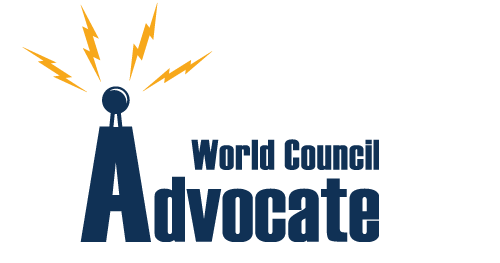Basel Committee Issues Newsletter on Credit Risk Issues
2023-08-22The recent Newsletter issued by the Basel Committee on Banking Supervision highlights the following points:
- Ongoing economic uncertainty continues to pose challenges for banks when assessing the credit quality of borrowers and vulnerable sectors.
- Sound provisioning practices enable banks identify any deterioration in credit risk in a consistent and timely way, thus forming an integral part of credit risk management.
- Supervisors continue to observe a range of practices on internal ratings-based (IRB) models and provisioning across banks and have taken supervisory action, including thematic deep dives, onsite investigations, issuing guidance and bank-specific actions.
- The Committee intends to continue monitoring bank practices in assessing credit risk and setting provisions, as the global economy continues to evolve.
Since the Newsletter on Covid-19 related credit risk issues was published in March 2022, credit risk continues to be a key area of focus for the Committee, amid the ongoing macroeconomic uncertainty and the potential impact on borrowers from rising interest rates, high inflation and market volatility. Failure to identify and measure deterioration in credit risk in a timely and consistent way may lead to higher future bank losses and capital inadequacy that could undermine confidence in the banking sector. Against this backdrop, supervisors remain cautious on banks' practices, given the challenges banks face in capturing any potential deterioration in the credit quality of borrowers and counterparties, considering model and data limitations.
Supervisors consider it crucial that banks adopt a high-quality and robust approach to credit risk modelling that can be applied consistently over time. The Covid-19 pandemic has increased the challenges banks face when assessing the credit quality of borrowers. The Committee has been monitoring and sharing supervisory observations on banks' policies and practices in relation to credit risk modelling, focusing on issues exposed by the Covid-19 pandemic that may remain relevant in the current risk environment. The work highlighted:
- The credit quality assessment of borrowers has become increasingly challenging for banks in the light of the Covid-19 pandemic. A range of practices have been observed in expected credit losses (ECL) provisioning and credit risk internal ratings-based (IRB) models, and there remains scope for further developing robust practices across banks.
- Supervisors continue to observe three main challenges that warrant further monitoring, namely (i) governance controls around model risk management including judgment-based overlay and model performance; (ii) capturing economic uncertainty; and (iii) identifying credit deterioration in vulnerable sectors and borrowers. Together these challenges could affect banks' ability to recognise changes in credit risk in a timely manner.
- Banks continue to apply sizeable judgment-based adjustments to compensate for model and data limitations to reflect credit risk expectations. Due to the scale of government support measures, some of credit risk have become disconnected from the actual risks of the portfolios, which may still materialise in the future.
- The Committee recognises the role played by judgment-based adjustments related to model performance and emphasises that these adjustments should be subject to robust governance and supported by appropriate documentation and methodologies. Banks should monitor and continuously enhance controls around model risk management and development to ensure they remain fit for purpose.
- Banks and supervisors may not have an accurate view of credit risk if model issues are not well understood or adequately compensated for. Supervisors continue to focus on banks' ability to identify model performance issues in a timely manner, and to identify enhancements to ensure a well controlled modelling process. Supervisors also continue to focus on banks' strategic plans to minimise and/or mitigate model risk through better capture of key risk drivers and robust data governance that are relevant to support a sound expected credit loss (ECL) process.
- Undercalibration of probability-of-default (PD) models has been observed by supervisors, and supervisory measures have led to remedial action on the part of banks, including model overlays, risk-weighted assets (RWA) overlays, PD scale-ups and RWA add-ons.
- Recent geopolitical events may have started a new cycle of credit conditions before possible effects of the Covid-19 pandemic have fully fed through. Focus has shifted towards adjustments to capture the impact on borrowers of factors from rising interest rates, high inflation, and market volatility. It may be more challenging to isolate the downturn period that should be used for the ECL process and for IRB models.
- Banks have experienced difficulties in assessing how economic shocks affect different portfolios as the risk environment has evolved rapidly and is very different from that of the recent past, leading to heightened model risk. Supervisors have observed that banks apply a range of different approaches to capture the impact of macroeconomic headwinds on borrowers, particularly when historical data may not reflect the current economic outlook. Supervisors continue to focus on: (i) how banks are using their sensitivity analysis capabilities to understand the impact of using alternative economic assumptions on provision estimates; and (ii) how effective banks' processes are in identifying vulnerable sectors and factoring sectoral risks in to provision estimates.
- The Committee stresses the importance of: (i) sensitivity analysis in assessing credit risk; and (ii) the appropriate use of data collected during the pandemic to understand how the key drivers of credit losses affect different portfolios.
- Supervisors and banks need to be prepared to address the challenges related to ECL provisioning processes and IRB models to ensure banks are able to identify any potential deterioration in the credit quality of borrowers and counterparties.
The Committee intends to continue assessing bank practices in credit risk modelling and will continue to monitor potential risks in the evolving economic environment and financial conditions.
A copy of the Newsletter can be viewed here.
Basel

